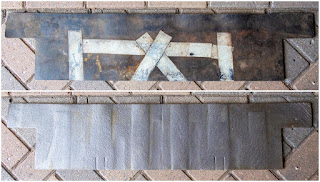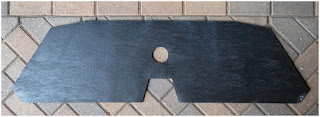Over the past weekend I have been using the fine weather as an excuse to work on the FHC. It were mainly small jobs like cleaning the sound insulation pads for the parcel shelf (YKC3632) and rear bulkhead (YKC1609). Nothing glamorous, but good to kill a few spare hours. Especially the ageing adhesive residue of the tape used to hang the bulkhead pad from the parcel shelf pad was a pain to remove. But white spirit, an old rag and a fair amount of elbow grease solved this. And yes I forgot I had a bottle of special glue removal hidden away somewhere. Only ran into it when I had finished this job! Though it didn’t have an impact on the end result.
And with the two pads cleaned they could be fitted to the car. Sadly the third pad (WKC3340) was attacked by mice, so that isn’t quite up to my standards to be re-used. That is one that will be addressed somewhere in the future!
Another area that got some attention was the brake master cylinder and the ignition coil. The brake failure switch got a quick health check and a cleaning job. After which it could be fitted and wired up together with the coil. If in doubt; the White/Yellow wire goes to the coil’s + terminal and the White/Slate wire to the – terminal.
And sticking with the wiring, I added some extra wires that were deleted on later cars; the wires for the roof mounted interior light. I managed to salvage part of these wires from the cars original wiring harness;
But that wasn’t long enough to reach the A-post on the passenger side. But I did have a few meters of the correctly colour coded wires in stock to adapt the later door harnesses for a roof mounted interior light. And with my trusty crimping tool adding the appropriate length was easy. Next job will be refurbishing and adapting the passenger door harness.
And to finish this post; I sorted all spring clips etcetera that I might need while fitting the car’s interior;


























